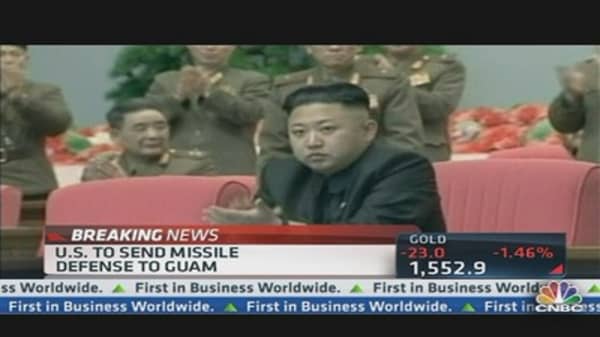Ratcheting up the rhetoric, North Korea warned early Thursday that its military has been cleared to wage an attack on the U.S. using "smaller, lighter and diversified nuclear" weapons.
The Pentagon, meanwhile, said Wednesday that it will deploy a missile defense system to the U.S. Pacific territory of Guam to strengthen the region's protections against a possible attack.
The warning from an unnamed army spokesman and carried by Pyongyang's state-run news agency was latest in a series of escalating threats from North Korea, which has railed for weeks against joint U.S. and South Korean military exercises taking place in South Korea and has expressed anger over tightened sanctions for a February nuclear test.
The foes fought on opposite sides of the three-year Korean War, which ended in a truce in 1953. The divided Korean Peninsula remains in a technical state of war, and Washington keeps 28,500 troops in South Korea to protect the ally.
The military statement said North Korean troops had been authorized to counter U.S. aggression with "powerful practical military counteractions," including nuclear weapons.
However, North Korea's nuclear strike capabilities remain unclear. Pyongyang is believed to be working toward building an atomic bomb small enough to mount on a long-range missile but is thought to be several years from being capable of mastering the technology.
Washington calls the military drills, which this time have incorporated nuclear-capable stealth bombers, routine annual exercises between the allies. Pyongyang calls them rehearsals for a northward invasion.
The U.S. move to protect Guam came after Defense Secretary Chuck Hagel said the United States sees a "real and clear" danger from North Korea, given its nuclear and missile capabilities and bellicose rhetoric.
The mounting crisis spooked investors. (Read More: Stocks Close Lower on North Korea Fears)
"We take those threats seriously," Hagel said, addressing an audience at the National Defense University in Washington.




